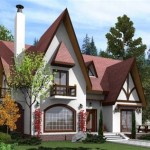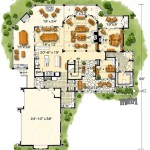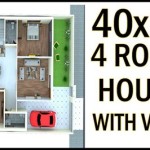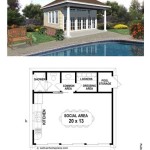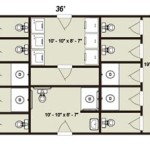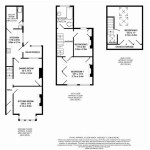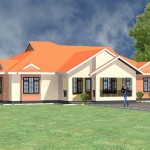Craftsman House Plans For Sloped Lots
Designing a home for a sloped lot presents unique challenges and opportunities. Rather than viewing the slope as a drawback, astute homeowners and architects recognize the potential for creating visually stunning and functionally efficient residences. Craftsman house plans, with their emphasis on natural materials, handcrafted details, and connection to the surrounding environment, are particularly well-suited for sloped lots. This article explores the key considerations and advantages of utilizing Craftsman house plans when building on sloping terrain.
The Craftsman architectural style emerged in the late 19th and early 20th centuries as a reaction against the ornate and mass-produced designs of the Victorian era. It champions simplicity, honesty in construction, and a deep connection to nature. Key characteristics include low-pitched gable roofs with overhanging eaves, exposed rafter tails, wide front porches supported by substantial columns, and an abundance of natural materials such as wood, stone, and brick. These features seamlessly integrate with the natural contours of a sloping lot, enhancing the aesthetic appeal and functional design of the home.
Advantages of Craftsman Style on Sloped Lots
Utilizing a Craftsman house plan on a sloped lot offers several significant advantages. The inherent design principles of the style lend themselves well to adapting to the unique challenges presented by uneven terrain. Maximizing views, creating walk-out basements, and seamlessly integrating the home with the landscape are just a few of the benefits.
One primary advantage is the potential for maximizing views. Sloped lots often provide elevated vantage points, offering panoramic vistas of the surrounding landscape. Craftsman house plans can be specifically designed to capitalize on these views through the strategic placement of large windows, expansive decks, and strategically oriented living spaces. The open floor plans often associated with Craftsman design further enhance the connection between the interior and exterior, allowing homeowners to fully appreciate the natural beauty surrounding their home.
Another significant benefit is the possibility of creating a walk-out basement. On a sloped lot, the lower level of the home can be partially or fully exposed, allowing for ground-level access and natural light. A walk-out basement can be finished and utilized as additional living space, such as a recreation room, home office, or guest suite. This significantly increases the usable square footage of the home without adding to the overall footprint or requiring extensive excavation. The Craftsman style's emphasis on natural materials allows the basement level to blend seamlessly with the surrounding landscape, creating a cohesive and aesthetically pleasing design.
Furthermore, Craftsman house plans readily integrate with the landscape. The use of natural materials like wood and stone helps the home blend harmoniously with its natural surroundings. Terraced gardens, retaining walls made of natural stone, and native landscaping can be incorporated into the design to further enhance the connection between the home and the environment. The low-pitched roofs and overhanging eaves characteristic of the Craftsman style also contribute to a more grounded and natural appearance, making the home feel less imposing on the landscape.
Key Design Considerations for Sloped Lots
Designing a Craftsman home for a sloped lot requires careful consideration of several key factors. These include site analysis, foundation design, drainage considerations, and accessibility planning. Addressing these aspects thoughtfully is crucial for creating a safe, functional, and aesthetically pleasing home.
Thorough site analysis is paramount. This involves assessing the slope's gradient, soil composition, and existing vegetation. Understanding the natural contours of the land allows architects and builders to design a home that minimizes site disturbance and maximizes the natural advantages of the lot. The site analysis should also identify any potential challenges, such as unstable soil, water runoff issues, or existing easements. This information will inform the foundation design and drainage strategies.
Foundation design is critical for ensuring the structural integrity of the home on a sloped lot. Several foundation options are available, including a slab-on-grade foundation, a crawl space foundation, and a full basement foundation. The choice of foundation will depend on the specific characteristics of the site, the desired level of basement space, and the budget. When building on a steep slope, a stepped foundation may be necessary to accommodate the changes in elevation. This involves creating a series of level platforms on which the foundation walls are built. Proper engineering and construction techniques are essential for ensuring the stability of a stepped foundation.
Effective drainage is crucial for preventing water damage and erosion on a sloped lot. Surface water runoff should be directed away from the foundation through the use of swales, French drains, and strategically placed landscaping. Gutters and downspouts should be properly sized and maintained to efficiently collect and divert rainwater. Underground drainage systems may be necessary to manage subsurface water. A well-designed drainage system will protect the home from water damage and ensure the long-term stability of the surrounding landscape.
Accessibility planning is another important consideration, particularly for homeowners who anticipate aging in place or have mobility limitations. Ramps, gradual pathways, and elevators can be incorporated into the design to provide easy access to all levels of the home. The placement of parking areas, entrances, and outdoor living spaces should be carefully considered to minimize the need for stairs and steep inclines. Universal design principles can be integrated throughout the home to create a more accessible and comfortable living environment for people of all ages and abilities.
Adapting Craftsman Details to a Sloped Lot Design
While the core principles of Craftsman architecture remain consistent, adapting the style to a sloped lot requires creative solutions and careful attention to detail. The use of different levels, terraced landscaping, and integrated outdoor spaces can further enhance the unique character of a Craftsman home built on sloping terrain.
The strategic use of multiple levels is a hallmark of successful Craftsman designs on sloped lots. Stepped floor plans can follow the natural contours of the land, creating a seamless transition between the interior and exterior spaces. Splitting the house into multiple levels can also help to break up the massing of the building, making it feel less imposing on the landscape. This approach allows for the creation of private outdoor spaces on each level, such as balconies, patios, and decks, each offering unique views and perspectives.
Terraced landscaping is an effective way to manage a sloping lot and create usable outdoor spaces. Retaining walls made of natural stone or timber can be used to create level terraces for gardens, patios, and lawns. These terraces not only provide functional outdoor areas but also enhance the aesthetic appeal of the property. The use of native plants and drought-tolerant landscaping can further reduce the environmental impact and create a more sustainable design. Terraced gardens can also serve as natural drainage systems, helping to manage water runoff and prevent erosion.
The integration of indoor and outdoor spaces is a key characteristic of Craftsman homes, and this is particularly important on sloped lots. Expansive decks, covered porches, and outdoor fireplaces can extend the living space beyond the confines of the interior walls. These outdoor areas can be designed to take advantage of the views and provide comfortable spaces for relaxing, entertaining, and enjoying the natural surroundings. The use of natural materials like wood and stone in the outdoor spaces helps to create a seamless transition between the interior and exterior, blurring the lines between the two.
The design and construction of a Craftsman home on a sloped lot require specialized knowledge and experience. Collaborating with an architect and builder who are familiar with the challenges and opportunities of sloping terrain is essential for creating a successful project. By carefully considering the site conditions, implementing appropriate design strategies, and paying attention to detail, it is possible to create a beautiful, functional, and sustainable Craftsman home that seamlessly integrates with the natural landscape.

House Plans For A Sloped Lot Dfd Blog

Plan 51696 Traditional Hillside Home With 1736 Sq Ft 3 Be

Plan 8131lb For The Front Sloping Lot Craftsman House Plans Basement

Craftsman Duplex House Plan Design Sloping Lots Master On Main Lot Plans Beach

Sloping Lot Craftsman Style House Plan 6590 The Marybell

House Plans For A Sloped Lot Dfd Blog

Plan 6865am Contemporary Home For A Sloping Lot House Plans Craftsman

Affordable Sloping Lot Craftsman Style House Plan 8745

Lake Wedowee Creek Retreat House Plan

Sloped Lot House Plans Floor For Builders

